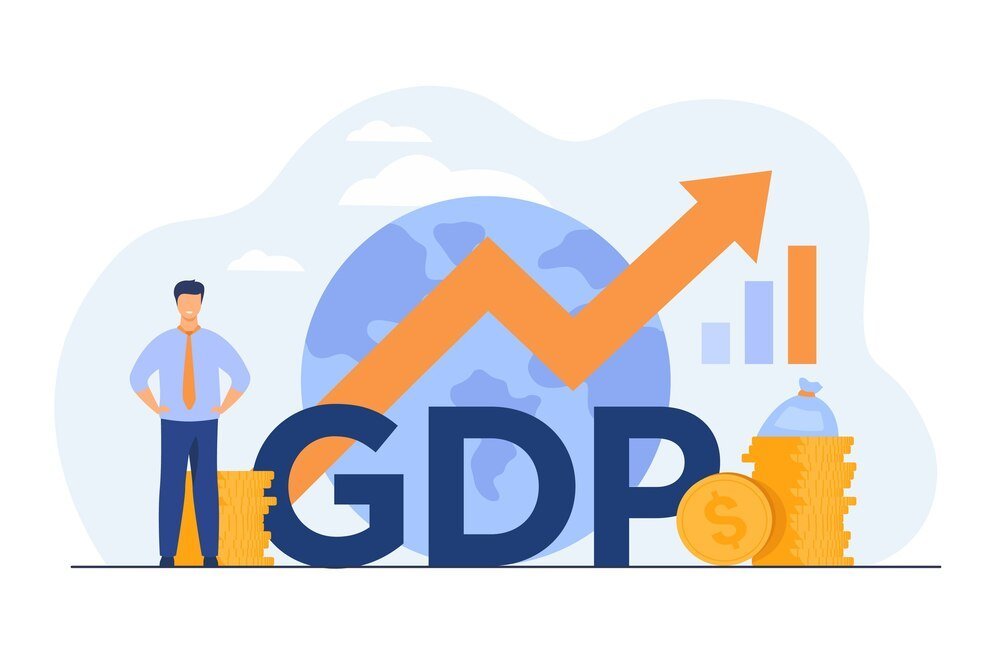Beyond Numbers: Understanding the Story Behind India’s Remarkable GDP Growth
India, one of the fastest-growing major economies in the world, has been making headlines with its remarkable GDP growth.
However, behind these impressive numbers lies a multifaceted story of economic transformation, social challenges, and aspirations of a billion people.
[ez-toc]
1. Introduction to India’s GDP growth
Over the past few decades, India has witnessed substantial economic growth, catapulting it into the league of emerging economic powerhouses.
The Gross Domestic Product (GDP) of India has been consistently expanding, reflecting the nation’s growing economic prowess on the global stage.
2. Factors contributing to India’s GDP growth
Economic reforms and liberalization
India’s economic liberalization in the early 1990s unleashed the country’s entrepreneurial spirit and paved the way for rapid industrialization and economic expansion.
Demographic dividend
With a large and youthful population, India possesses a demographic dividend, providing a significant workforce and consumer base for economic activities.
Infrastructure development
Investments in infrastructure projects, such as transportation, energy, and telecommunications, have facilitated economic growth by reducing bottlenecks and improving connectivity.
Technological advancements
The digital revolution in India has spurred innovation, entrepreneurship, and productivity gains across various sectors, contributing to GDP growth.
Globalization and trade
Integration into the global economy through trade agreements and foreign investments has opened up new markets and opportunities for Indian businesses, driving economic growth.
3. Challenges faced by India’s economy
Despite its impressive GDP growth, India grapples with several economic challenges that hinder its full potential.
Income inequality
Rapid economic growth has exacerbated income disparities, leading to widening gaps between the rich and the poor.
Unemployment
Job creation has not kept pace with the expanding workforce, resulting in high unemployment rates, particularly among the youth.
Agriculture sector issues
The agricultural sector, although vital for livelihoods, faces challenges such as low productivity, fragmented land holdings, and inadequate infrastructure.
Environmental concerns
Unchecked economic growth has led to environmental degradation, pollution, and depletion of natural resources, posing long-term sustainability challenges.
4. Impact of GDP growth on different sectors
India’s GDP growth has had varying impacts on different sectors of the economy.
Manufacturing
The manufacturing sector has experienced growth, driven by government initiatives such as Make in India, aiming to boost domestic production and employment.
Services
The services sector, including IT, finance, and healthcare, has been a major contributor to GDP growth, leveraging India’s skilled workforce and technological capabilities.
Agriculture
Despite its declining share in GDP, agriculture remains a significant source of employment and livelihoods for a large segment of the population.
5. Criticism and controversies surrounding GDP measurement
The methodology used to calculate GDP in India has faced criticism and controversies, raising questions about the accuracy and reliability of economic data.
Quality of data
Concerns have been raised regarding the accuracy of economic data, with discrepancies between official estimates and ground realities.
Informal economy
A substantial portion of India’s economic activities takes place in the informal sector, which often goes unaccounted for in GDP calculations.
6. Beyond numbers: Understanding the human aspect
While GDP growth is an important indicator of economic progress, it does not capture the full spectrum of human development and well-being.
Social development indicators
Measuring progress beyond GDP requires considering indicators such as education, healthcare, poverty levels, and social inclusion.
Inclusive growth
Efforts to promote inclusive growth aim to ensure that the benefits of economic prosperity are shared equitably among all segments of society.
Poverty alleviation efforts
Government programs such as the National Rural Employment Guarantee Act (NREGA) and poverty alleviation schemes focus on uplifting marginalized communities and reducing poverty.
7. Conclusion
India’s remarkable GDP growth story is a testament to its resilience, entrepreneurial spirit, and aspirations for prosperity. However, addressing the underlying social, economic, and environmental challenges is essential to ensure sustainable and inclusive growth for all.

